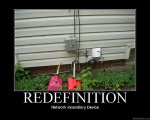mbrooke
Batteries Included
- Location
- United States
- Occupation
- Technician
This is true, but we run into events like these no matter what the technology is. Electrician's "red headed step child" just happens to be the AFCI. Go figure.
Like I said, we don't throw it all out because of a one in a million problem. We better embrace it....the code writer certainly are!
Why embrace something that is supposed to solve a problem that does not even exist? An arc fault is nothing but a re-branded short circuit.

